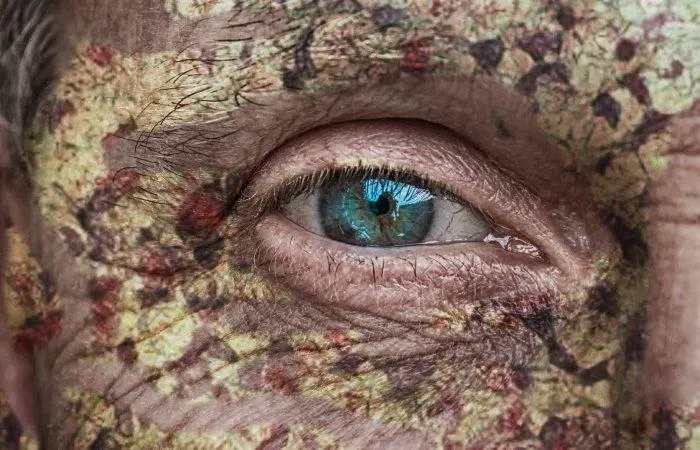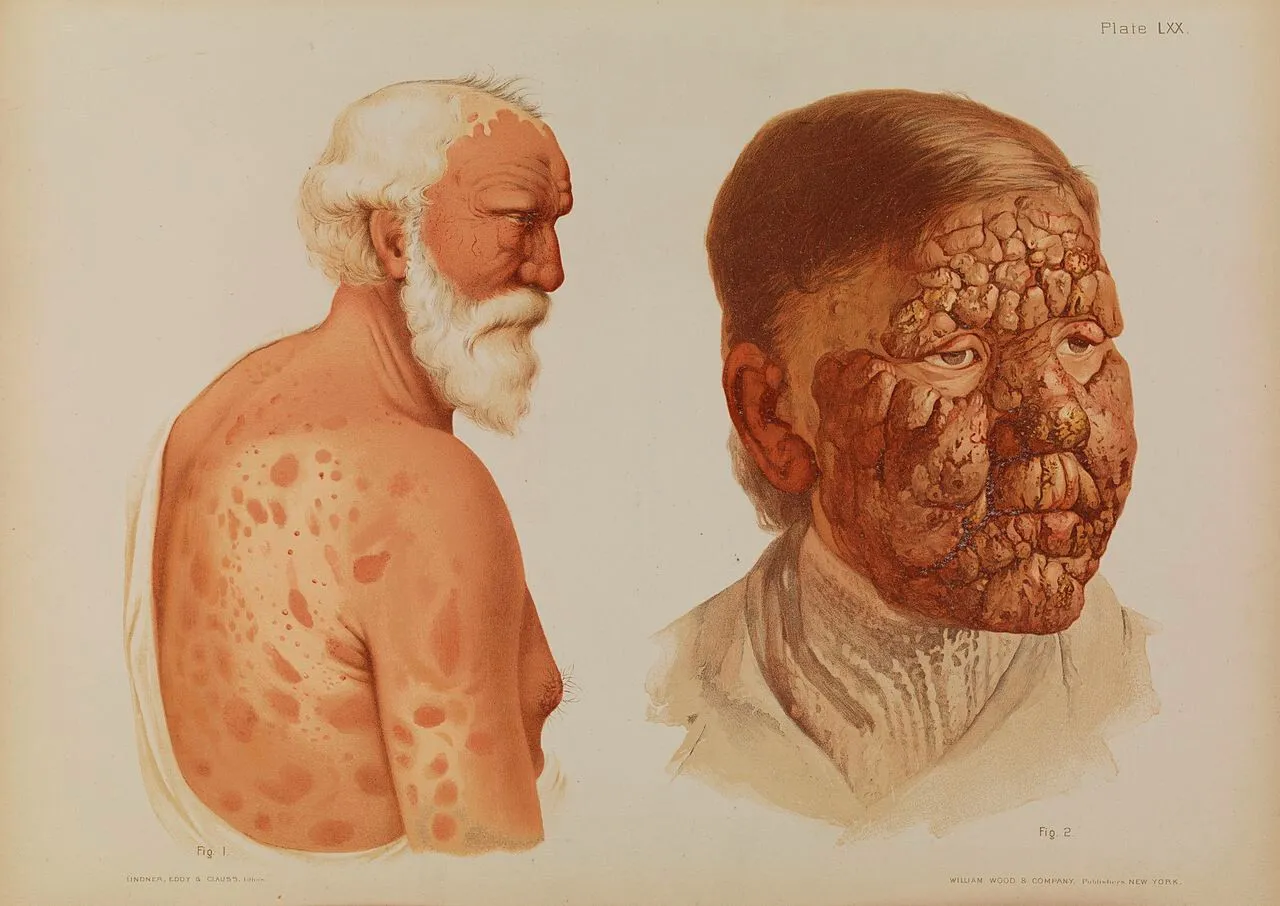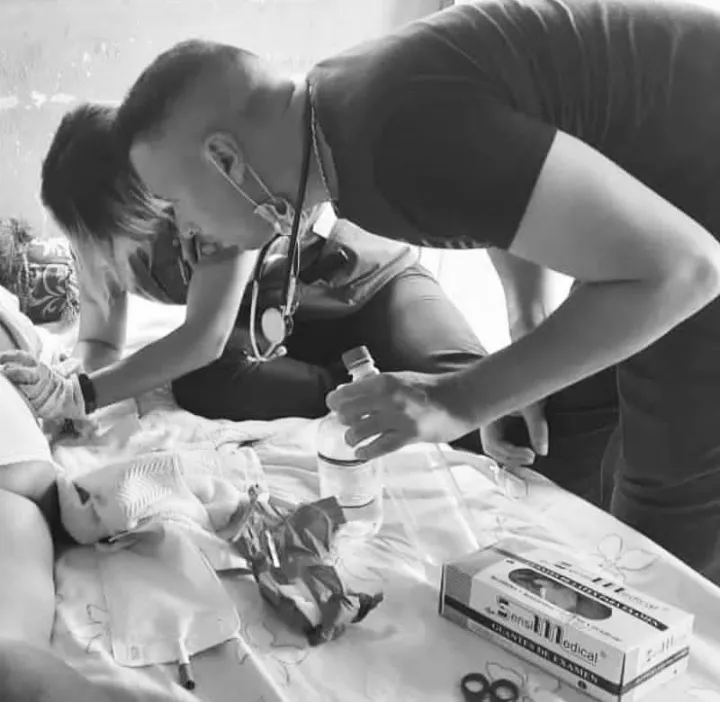Hola amigos de Hive, es un honor saludarlos nuevamente. El último sábado de enero hace su aparición, y con el la oportunidad de recargar energías a través del descanso, de corazón espero que estén muy bien, con salud principalmente que lo demás como decía mi abuela es "ñapa"(propina).
A propósito, el último domingo de enero de cada año (mañana), La Organización Mundial de la Salud, decidió que se conmemore, El Día Internacional Contra Lepra.

¿Que es la Lepra?
Es una enfermedad infecciosa de origen bacteriano, producida específicamente por la Mycobacterium Leprae (Bacilo de Hansen). Se transmite a través de las goticas de flügge (microgotas de secreciones que expulsamos de la boca a nariz), lo que le da un mecanismo de transmisión denominado aeróbico.
Es importante mencionar, que un individuo puede estar contagiado de lepra durante años, y nunca manifestar síntomas o signo alguno. El bacilo casual de la patología avanza muy lentamente, su período de incubación llega a ser, hasta de 7 años y suele revelarse sobretodo en pacientes que están inmunodeprimidos.
Antecedentes:
Son muchas las teorías que se han generado en base a La Lepra. La ciencia y La religión, coinciden en que esta enfermedad surgió hace cientos de años, inclusive mucho antes de la aparición de Cristo. Estudios científicos han revelado, que fue muy frecuente en épocas medievales y se ha determinado que muchas personas de esa época según estudios muestras óseas la padecieron.
Los religiosos pensaban que La Lepra era un castigo divino, y abandonaban a quien la padecía, condenándolo a soledad, humillaciones y torturas.
Tanto ha sido el impacto de la enfermedad, que se menciona en la Biblia, incluso Moisés la vivió en carne propia, siendo curada milagrosamente por Jesucristo (Éxodo 4:6).

Mucho tiempo ha pasado desde que Jesús sano a Moisés, sin embargo a día de hoy, las personas que padecen esta patología, son rechazados y discriminados aún por la sociedad.
Según la Organización Mundial de la Salud, se estima que cada año se reportan al menos 200.000 casos en el mundo, principalmente en África y Asia.
Sintomas:
Lesiones cutáneas: En los primeros signos y síntomas aparece una manchas en la piel de color claro, lo que hace difícil en primera instancia el diagnóstico de la enfermedad.
Más tarde, se puede manifestar: Dolor en las articulaciones, ampollas, enrojecimiento, erupciones cutáneas indoloras, para más tarde presentar una especie de ampollas de tamaño mediano que por lo general vienen acompañadas por daño neurólogico se pierde la sensibilidad y limitación de los movimientos sobretodo en manos y piernas, inclusive podría existir parálisis.
¿Se puede prevenir la lepra?
Como todas las enfermedades infecto contagiosas, es 100% prevenible, a través del distanciamiento social, y las medidas higiénico-sanitarias básicas como el uso del tapabocas, el lavado de manos, y una correcta higiene personal.
Es importante destacar, como anteriormente mencioné que es muy difícil manifestar signos o síntomas de lepra sin embargo nunca está demás cuidarse.
Diagnóstico:
Para diagnosticar esta enfermedad, es necesario pensar en ella, estar atento a signos y síntomas asociados a esta patología.
Asi mismo un interrogatorio minucioso al paciente sería oportuno, además de un examen físico meticuloso, todo esto puede ser complementado con un examen de laboratorio donde se prestará especial atención al valor de los leucocitos pues suelen estar aumentados, a predominio de neutrófilos.
De ser positivo lo anteriormente planteado, se puede indicar una biopsia de piel, que nos dará diagnóstico certero sobre está enfermedad.
Tratamiento:
Estará marcado por el apoyo a nivel psicólogo que se le pueda brindar al paciente, conjuntamente con corticoides, y tratamiento antibiótico determinado por el médico.

Hay que resaltar que esta enfermedad a día de hoy es 100% curable, y quién la padece definitivamente requiere una mano amiga, dónde predomine la comprensión y el bien trato.
Gracias.
Dios siempre de Cabrestero.
English
Hello friends of Hive, it is an honor to greet you again. On the last Saturday of January it makes its appearance, and with it the opportunity to recharge energy through rest, I sincerely hope that you are very well, mainly in good health, because the rest, as my grandmother used to say, is "ñapa" (tip).
By the way, on the last Sunday of January of each year (morning), the World Health Organization decided to commemorate the International Day Against Leprosy.
What is Leprosy?
It is an infectious disease of bacterial origin, produced specifically by Mycobacterium Leprae (Hansen's Bacillus). It is transmitted through the droplets of flügge (microdrops of secretions that we expel from the mouth to the nose), which gives it a transmission mechanism called aerobic.
It is important to mention that an individual can be infected with leprosy for years, and never show any symptoms or signs. The casual bacillus of the pathology progresses very slowly, its incubation period reaches up to 7 years and it usually reveals itself above all in patients who are immunocompromised.
Background:
There are many theories that have been generated based on Leprosy. Science and religion agree that this disease emerged hundreds of years ago, even long before the appearance of Christ. Scientific studies have revealed that it was very common in medieval times and it has been determined that many people of that time suffered from bone samples according to studies.
The religious thought that Leprosy was a divine punishment, and they abandoned those who suffered from it, condemning them to loneliness, humiliation and torture.
So much has been the impact of the disease that is mentioned in the Bible, even Moses lived it in his own flesh, being miraculously cured by Jesus Christ (Exodus 4:6).
A long time has passed since Jesus healed Moses, however today, people who suffer from this pathology are still rejected and discriminated against by society.
According to the World Health Organization, it is estimated that each year at least 200,000 cases are reported in the world, mainly in Africa and Asia.
Symptoms:
Skin lesions: In the first signs and symptoms, light-colored spots appear on the skin, which makes the diagnosis of the disease difficult in the first instance.
Later it can manifest: Pain in the joints, blisters, redness, painless skin rashes, to later present a kind of medium-sized blisters that are usually accompanied by neurological damage, loss of sensitivity and limitation of movements, especially in the hands. and legs, there could even be paralysis.
Can leprosy be prevented?
Like all infectious and contagious diseases, it is 100% preventable, through social distancing, and basic hygienic-sanitary measures such as the use of face masks, hand washing, and correct personal hygiene.
It is important to point out, as I mentioned before, that it is very difficult to manifest signs or symptoms of leprosy, however, it is never too much to take care of yourself.
Diagnosis:
To diagnose this disease, it is necessary to think about it, be attentive to signs and symptoms associated with this pathology.
Likewise, a thorough interrogation of the patient would be appropriate, in addition to a meticulous physical examination, all this can be complemented with a laboratory examination where special attention will be paid to the value of leukocytes, since they are usually increased, with a predominance of neutrophils.
If the aforementioned is positive, a skin biopsy may be indicated, which will give us an accurate diagnosis of this disease.
Treatment:
It will be marked by psychological support that can be provided to the patient, together with corticosteroids, and antibiotic treatment determined by the doctor.
It should be noted that this disease today is 100% curable, and whoever suffers from it definitely requires a helping hand, where understanding and good treatment prevail.